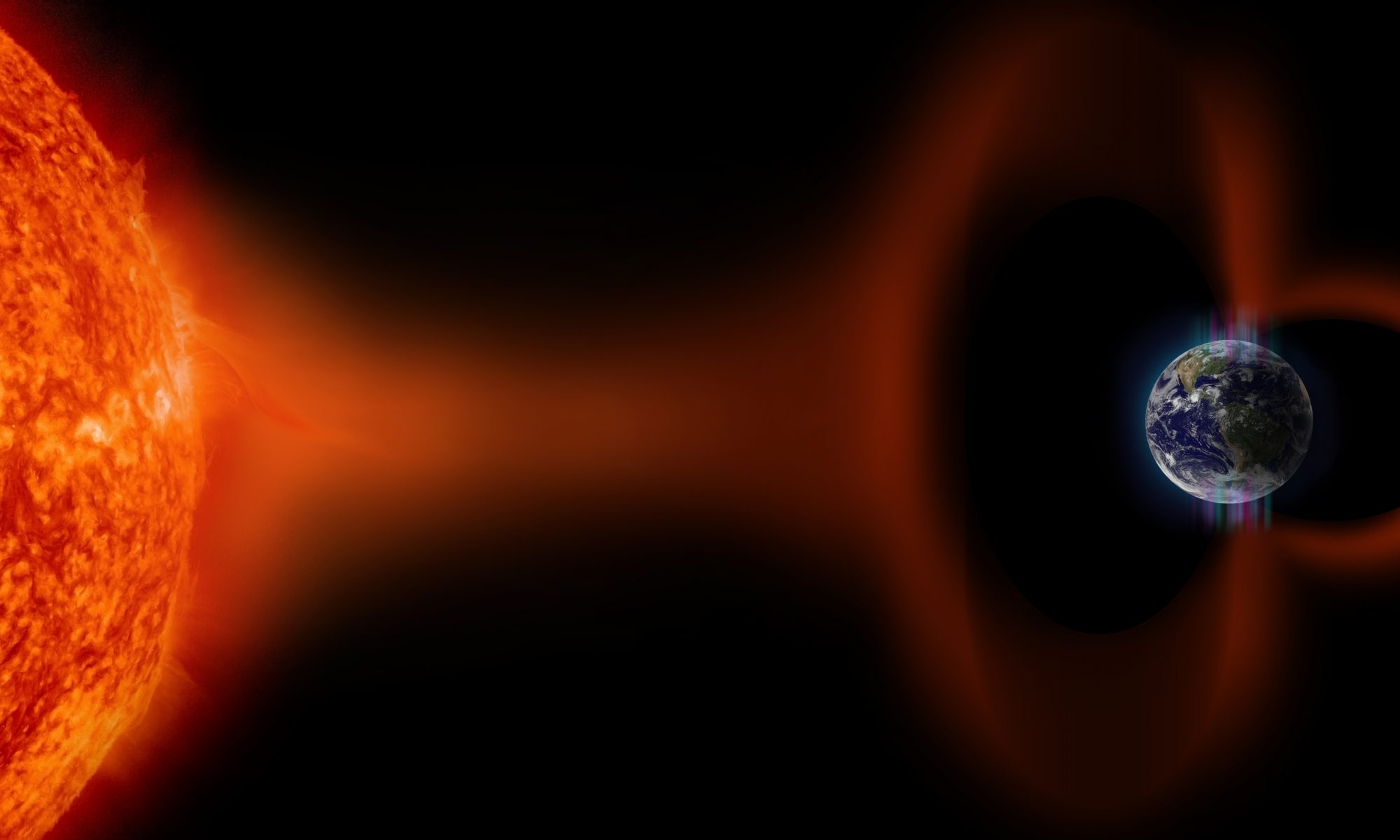QUANTIFYING THE EFFECTS OF INDUCTIVE ELECTRIC FIELDS IN THE TERRESTRIAL MAGNETOSPHERE (NSF)
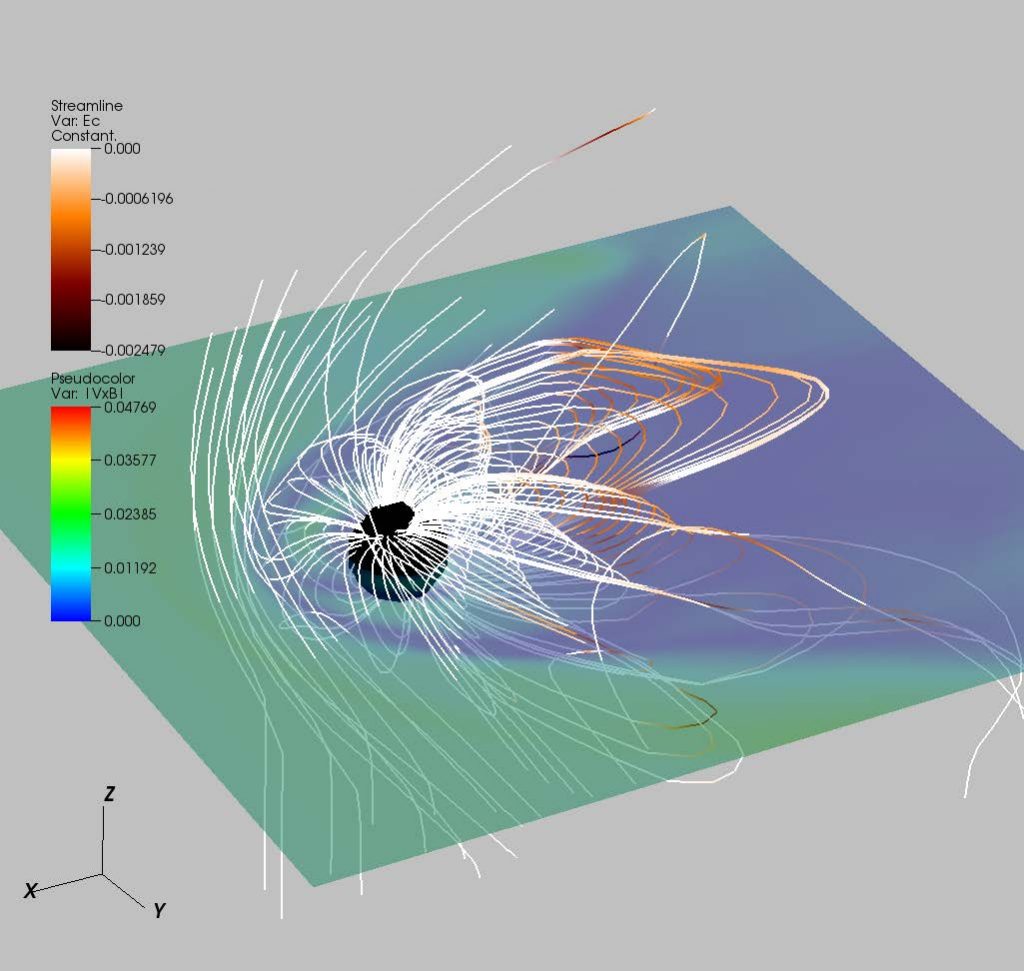
The terrestrial magnetosphere has the capability to rapidly accelerate charged particles up to high energies over relatively short times and distances, leading to an increase in the near-Earth currents. These energetic particles are injected from the magnetotail into the inner magnetosphere through two primary mechanisms. One transport method is the potential-driven convection. This occurs during periods of southward Interplanetary Magnetic Field (IMF) when part of the dawn-to-dusk solar wind electric field maps effectively down to the polar ionosphere. The second transport process, the inductive drift, is caused by the intense electric fields created from the magnetotail collapse and, as opposed to the potential driven convection which is a large scale phenomena, has a localized nature. This transport mechanism involves a sudden reconfiguration of the magnetic field and the creation of localized transient induced electric fields. The relative contribution of potential and inductive electric field driven convection resulting in the development of the storm-time ring current has remained an unresolved question in geospace research due to the challenging task of assessing the inductive effects which arise from the presence of time-dependent magnetic fields.
Assessing the relative contribution of potential versus inductive electric fields at the energization of the hot ion population in the terrestrial magnetosphere, is only possible by thorough examination of the time-varying magnetic field and current systems using global modeling of the entire system. The method of separation of the electric field into inductive and potential components is developed, based on Helmholtz vector decomposition of the motional electric field, calculated by the BATS-R-US model. Numerical experiments are used to quantify the relative contributions of potential and inductive electric fields at driving plasma sheet ions into the inner magnetosphere.
DETERMINING THE CONTRIBUTION OF NITROGEN TO THE TOTAL IONOSPHERIC ION OUTFLOW (AFOSR)

Even though past observations have established that N+ is a significant ion species in the ionosphere and its presence in the magnetosphere is significant, the transport and energization of N+, in addition to that of O+, have not been considered by most studies, simply because the observational record has been overlooked. In spite of only 12% mass difference, nitrogen and oxygen have different ionization energies, scale heights and charge exchange cross sections with the exospheric hydrogen. Based on these differences, tracking the behavior of oxygen and nitrogen ions serves as a tracer for the altitude dependent transport and energization processes of ionospheric plasma.
This work quantifies for the first time the distribution of heavy ions in the upper ionosphere, the location their ionization takes place and will determine the role of ionospheric convection in the production and outflow rate of the heavy ions. This new capability opens the possibility to study the behavior and evolution of all major ionospheric constituents and will provide a unique and necessary view into the differential transport of heavy vs. light ionospheric species. The presence of these heavy ions in the near-Earth environment has a profound impact on the global magnetosphere-ionosphere dynamics as they affect the structure and properties of local plasma, as well as wave propagation in this region.
IMPACT OF ENERGETIC HEAVY IONS ON THE MAGNETOSPHERE DYNAMICS
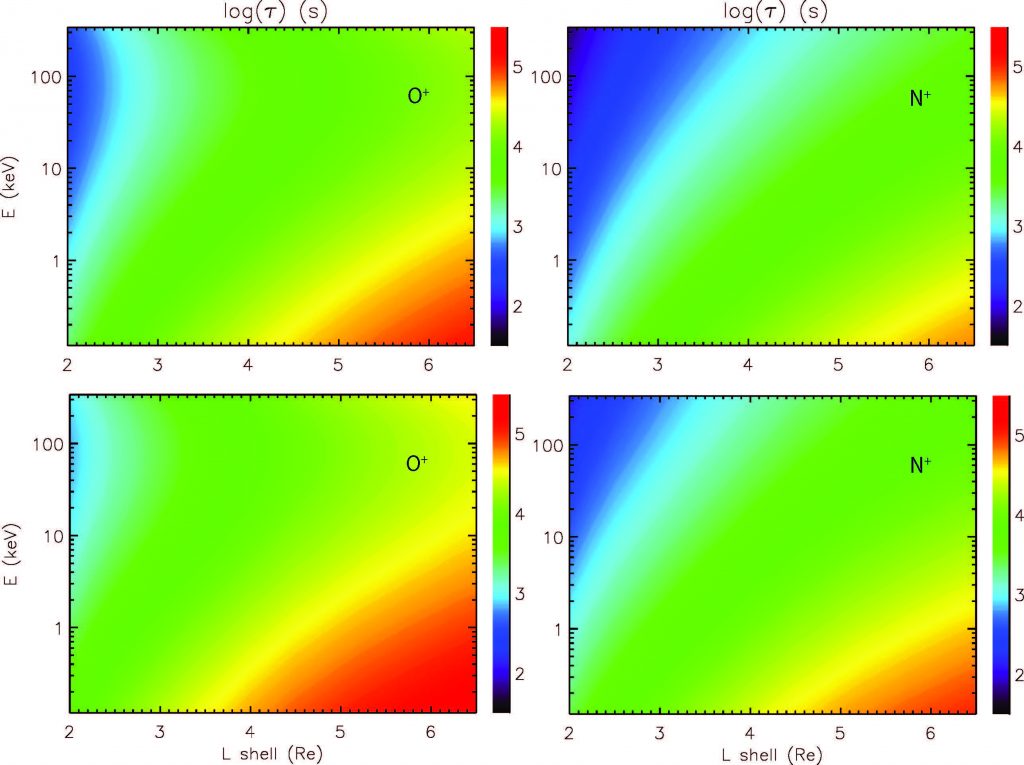
This project quantifies the relative contribution of nitrogen ions to the total heavy ion population of the near-Earth environment, and assess their role in the energization and loss mechanisms that control the dynamics of this region. The presence of heavy ions can have a profound impact on the temporal response of the magnetosphere to internal and external forcing and can play a significant role in plasma entry and transport processes within the magnetosphere and ionosphere. The outflow of N+ from the ionosphere, in addition to O+, could affect the global structure and properties of the current sheet, the mass loading of the magnetosphere and lead to changes in the local properties of the plasma. The reconnection process is strongly influenced by heavy ions, therefore a detailed knowledge of the composition of the local plasma (i.e. distinguishing between O+ and N+ ions) is required in order to thoroughly understand the leading causes of magnetic reconnection.
The charge exchange process strongly affects the ring current plasma structure and dynamics and charge exchange loss processes are particularly important after the initial phase of the ring current decay and references. The probability of charge exchange with neutral atoms from the exosphere depends strongly on the energy of the incident ion and is governed by the charge exchange cross sections, which are both energy and species dependent, therefore different ion species have different lifetimes in the ring current.
Knowledge of the differential transport of N+ and O+ ions throughout the magnetosphere system will provide insight into the connection between the macro-scale dynamics and micro-scale processes that govern this region. A comprehensive description of the particle dynamics in the terrestrial magnetosphere under electric and magnetic field distortions will broaden our fundamental understanding of plasmas embedded in magnetic fields.
GPU-ACCELERATED ENSEMBLE FORECASTING

Extreme space weather events can disturb satellite-to-ground communications, and ring current-induced power surges can even jeopardize space missions. Therefore, being able to predict space weather and mitigate the damage it might cause is critical to human activities. However, prediction and mitigation of space weather effects require accurate numerical modeling of the space environment and developing efficient numerical models require routine observations and reliable observational constraints.
Not only can the physics-based models predict the system’s behavior, they can also describe how the system evolves in time and explain mechanisms driving the change. However, these models usually require extensive computation resources whereas the statistics-based models have little to no calculation overhead. Apart from computational costs, assumptions need to be made when working with physics-based model, which is are necessarily accurate for the far more complex real-world. Training a machine learning model with large data set requires intensive computing time and power. In contrary to the common methodology of building on-premise computing equipment, we utilize the cloud computing platform with performance, cost and operations carefully considered.
PREEVENTS CHARGED – Comprehensive Hazard Analysis for Resilience to Geomagnetic Extreme Disturbances (NSF)
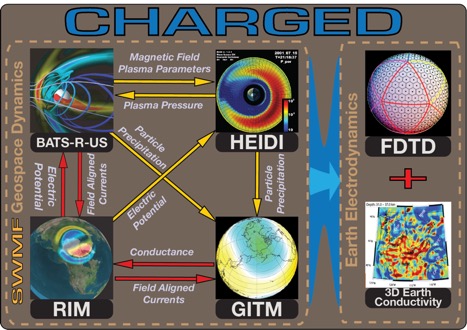
Extreme space storms threaten society via Geomagnetically Induced Currents (GICs) that damage power transmission systems. The catastrophic capacity of GICs became evident during the “Carrington Event” space storm of 1859, which set telegraph stations ablaze. A more recent storm collapsed the Quebec power grid in March 1989 and the July 2012 Carrington-class solar flare just missed the Earth. An extreme event would devastate the US, costing more than $2T and leaving hundreds of millions without electricity for more than a month. The National Space Weather Action Plan calls for an immediate increase in research and improvements to our predictive capabilities to address this threat. Understanding and quantifying GIC effects requires a multidisciplinary approach that covers the solar wind-magnetosphere-ionosphere interaction, ionospheric currents, and ground-level electric fields caused by currents flowing in the conductive lithosphere. Including all of these factors for extreme events is challenging because the system is tightly coupled, nonlinear, and non-local.
A successful approach requires expertise in space science, atmospheric science, geophysics, and computational science. Comprehensive Hazard Analysis for Resilience to Geomagnetic Extreme Disturbances (CHARGED) applies experts in these disciplines to create a fully coupled, physics-based model of GICs that includes the magnetosphere, ionosphere, and solid Earth together with validation against state-of-the art globally distributed observations.
The Space Weather Modeling Framework (SWMF) will be improved with realistic particle precipitation and ionospheric conductance physics. A global 3D finite-difference time-domain (FDTD) model will be used to propagate the ionosphere signal through the ground while accounting for the oceans and variable lithosphere conductivity. This model will be validated using the best available in-situ and remote data to determine its predictive accuracy. The relationship between solar driving and GICs will be explored for both historical and idealized extreme events.
Outflow and Geospace: Impact and Feedback of Heavy Ions In the Magnetosphere (NASA)

Understanding ionospheric outflow is an important, but difficult problem of the geospace system. Heavy ions influence many magnetospheric processes, including reconnection, mass loading of convection, and energetic-thermal plasma coupling (especially via plasma wave excitation and propagation). Similarly, precipitating fluxes of energetic particles dynamically alter ionospheric conductance, and thus the pattern of field- aligned currents, electric fields, Joule heating, and convection. However, our grasp of ionospheric outflow and its effects is limited because the geospace system is highly coupled and changes to one part exert nonlinear feedback elsewhere.
With the Space Weather Modeling Framework (SWMF), which includes fully coupled models of the relevant domains within geospace, we can address some of these questions. This study will investigate the source of ionospheric outflow and the nonlinear feedback of heavy ions on magnetospheric processes.
Understanding Ion Heating and Convection using TWINS and SWMF (NASA)
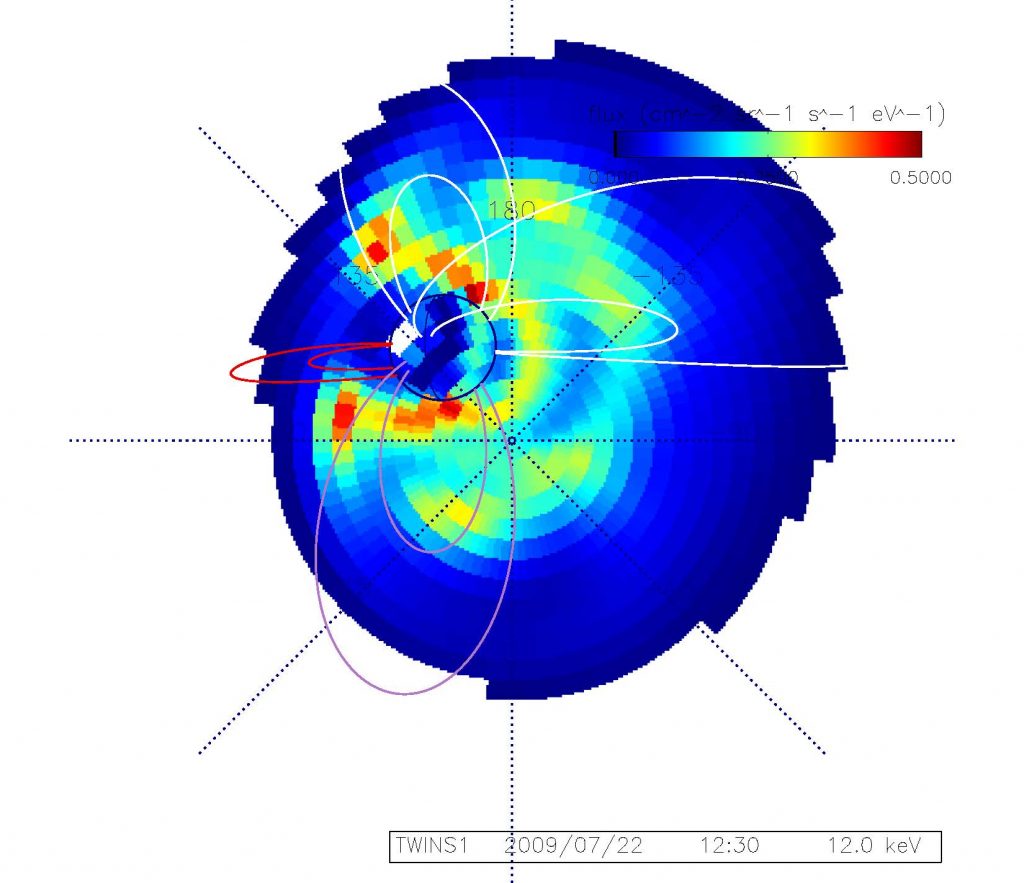
The solar wind drives changes in Earth’s plasma sheet, such as increases in ion temperatures. The characteristics of the plasma sheet, in turn, influence the dynamics of the inner magnetosphere and, thus, the evolution of geomagnetic storms. To be able to accurately model and predict the course of a geomagnetic storm driven by features in the solar wind, we must improve our understanding of these connections. To achieve this goal, we analyze plasma sheet ion temperatures using energetic neutral atom data from the NASA TWINS mission, model the dynamics of the magnetosphere using the Space Weather Modeling Framework (SWMF), and conduct data-model comparisons.
